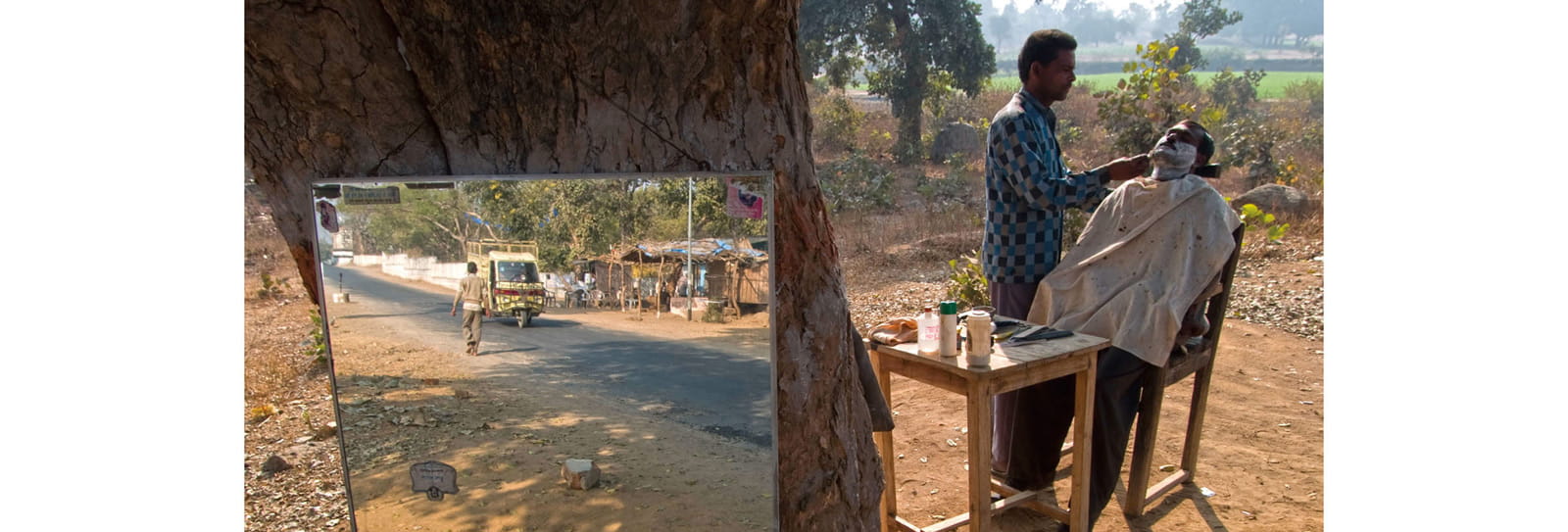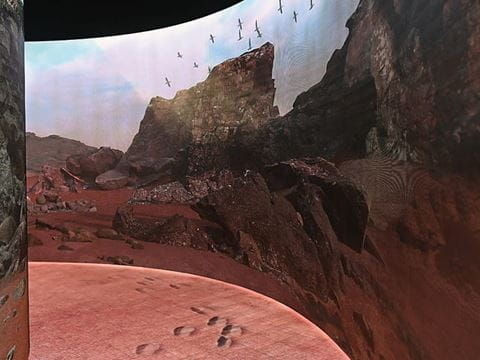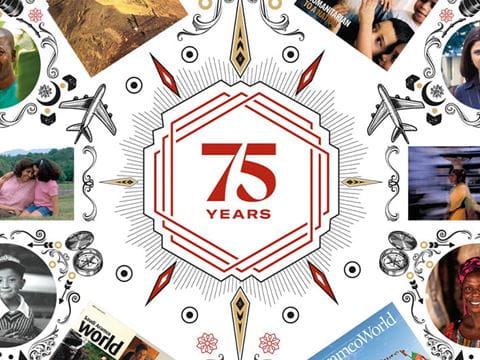
FirstLook: State Highway 37, near Orchha, Madhya Pradesh, Central India
- Arts
- Photography
Photograph by David H. Wells
Driving north out of the historic town of Orchha in the morning, I spotted a roadside tea shop and, near it, this barber who had hung a large mirror to a tree, facing the road. It was a common enough scene: Tens of thousands of independent, casual tea shops serve travelers on India’s highways and byways; outdoor barbers are less common, as they tend to work more often near marketplaces. As my wife and friends got tea, I stayed around chatting with the barber and his customer, showing them a few images on my camera, and then leaving them to their conversation and work. To make this image, I looked to the mirror for a secondary plane of activity, a kind of second narrative, to add depth and complexity. I took variations of this image from different positions, using different lens focal lengths as I tried to harmonize the primary and secondary scenes, looking for a moment when both the barber and the mirror offered elements that added to an overall narrative. For me, the mirror was not just a photographer’s challenge. It was also a way to suggest subtly that despite my many months spent all around India over the past two decades, both on assignment and visiting my in-laws’ family, I am forever looking from the outside in, working to distinguish one plane of experience and meaning from another.
You may also be interested in...

Hijrah: A Journey That Changed the World
History
Arts
Avoiding main roads due to threats to his life, in 622 CE the Prophet Muhammad and his followers escaped north from Makkah to Madinah by riding through the rugged western Arabian Peninsula along path whose precise contours have been traced only recently. Known as the Hijrah, or migration, their eight-day journey became the beginning of the Islamic calendar, and this spring, the exhibition "Hijrah: In the Footsteps of the Prophet," at Ithra in Dhahran, Saudi Arabia, explored the journey itself and its memories-as-story to expand understandings of what the Hijrah has meant both for Muslims and the rest of a the world. "This is a story that addresses universal human themes," says co-curator Idries Trevathan.
FirstLook: Rain in Fayoum
Arts
I took this photo during a rainy day in November 2018 from the window of my family home in Fayoum, Egypt, located about 100 kilometers southwest of the capital. It hardly rains but a few times in the year in most parts of Egypt, and when it does, it is always something special, bringing Joy and happiness particularly for the local children.
Reflections on Journeys
Arts
History
Part 2 of our series celebrating AramcoWorld’s 75th anniversary this year highlights “visual vagabonding”—the magazine’s expanded use of vibrant images over the decades to fulfill the mission of cultural connection.